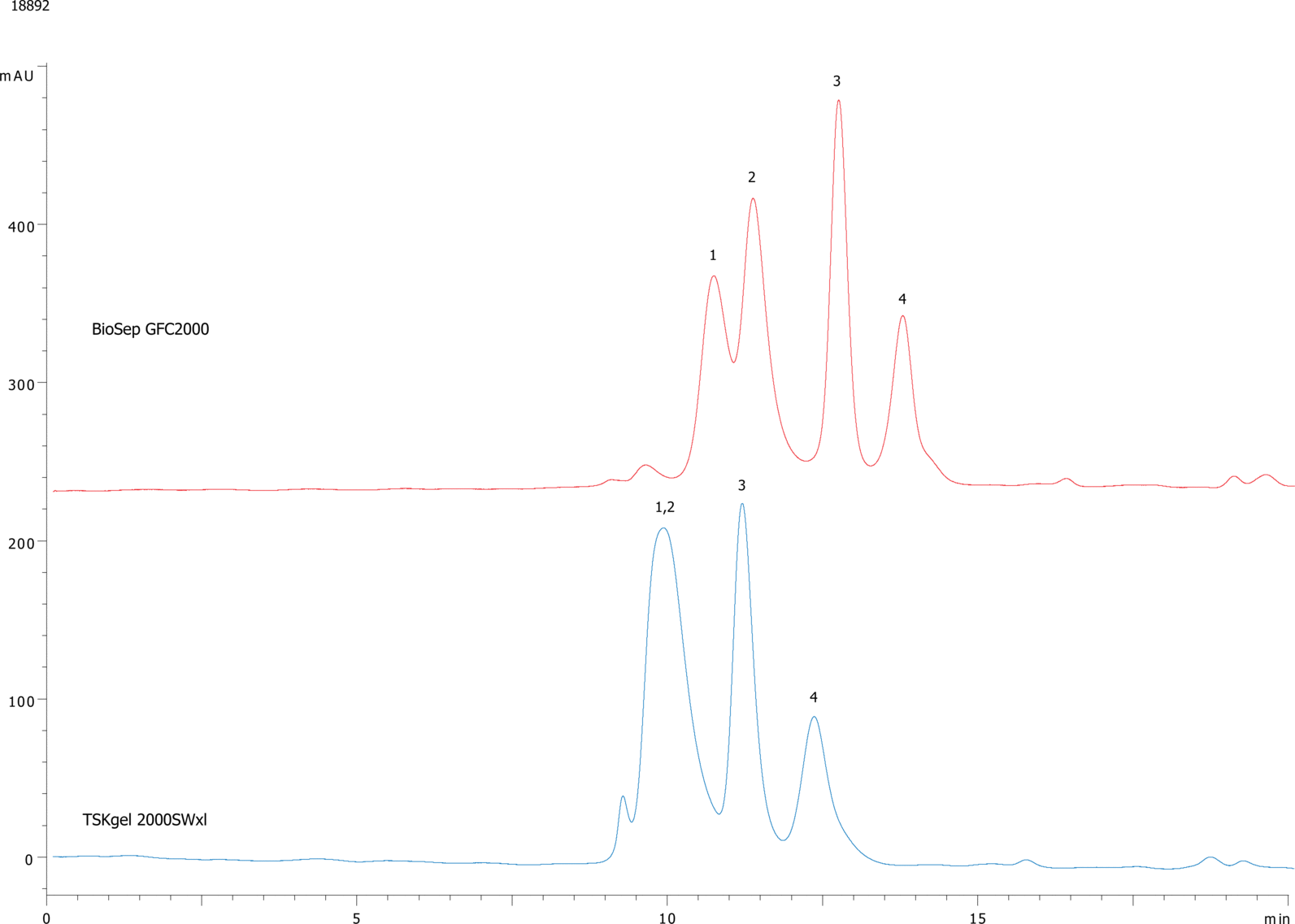| 1Human IgA |
|---|
| 2beta-Amylase |
| 3BSA |
| 4Ovalbumin |
Applications
Medium range MW Separation, 50-500 KDa on BioSep2000 (2) and TSK
18892
Separation Mode: Gel Filtration Chromatography (GFC)
Gel Filtration Chromatography (GFC)
SEC-s2000
HPLC
Pharmaceutical/Biopharmaceutical
Life Science
Protein
Biochemical Compound / Nutrient
Analytes
Details
LC Conditions (App ID: 18892)
Column: |
Brand Name: BioSep-SEC-S |
Part No: |
Phase Name: SEC-s2000 |
Sample Note: Application focus: Comparing and contrasting standard protein separations on BioSep 2000 versus competitor columns.
To better understand the performance characteristics of the BioSep 2000 GFC media, comparisons were performed using a standard protein mixture that evaluated resolution between 50 to 500 KDa molecular weight. Columns for BioSep 2000 and TSKgel SWxl 2000 (300 x 7.8 mm) were used along with standard chromatography conditions (PBS buffer: 10mm phosphate, 150 mm NaCl, pH 7.4, 0.6 mL/min) for GFC. A medium molecular weight standard (Ig-A 300KDa, B-Amylase 200KDa, BSA 66 KDa, Ovalbumin 45 KDa) was injected on each column and results were overlaid.
When results are reviewed one can see that the BioSep 2000 has a slightly higher optimal molecular weight selectivity window than the competitor column; Ig-A and B-amylase are mostly resolved and BSA is fully resolved with the BioSep 2000 versus the competitor column where the first two components co-migrate. GFC 3000 series columns are typically used for separations above 100 KDa; however, this applications shows that the BioSep 2000 can also be used for separation where the largest components of interest can be as large as 300KDa while still separating low molecular weight components (as is seen with many PEG protein applications where multi-PEG conjugates may be very large). These results show the utility and performance for the BioSep 2000 at the higher end of its optimal molecular weight range in this specific application, other applications (App ID#18945) better illustrate the use of BioSep 2000 for lower molecular weight applications. |
Similar Applications
No Data















